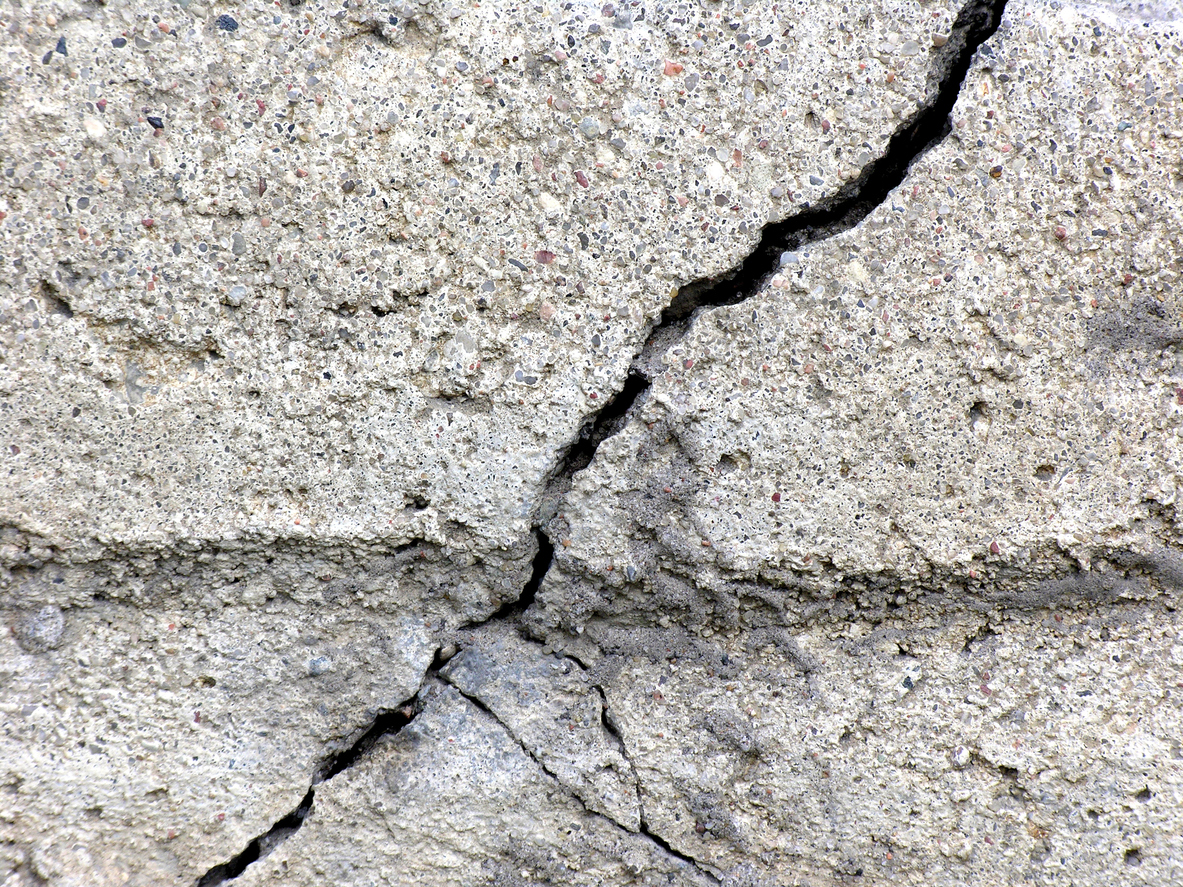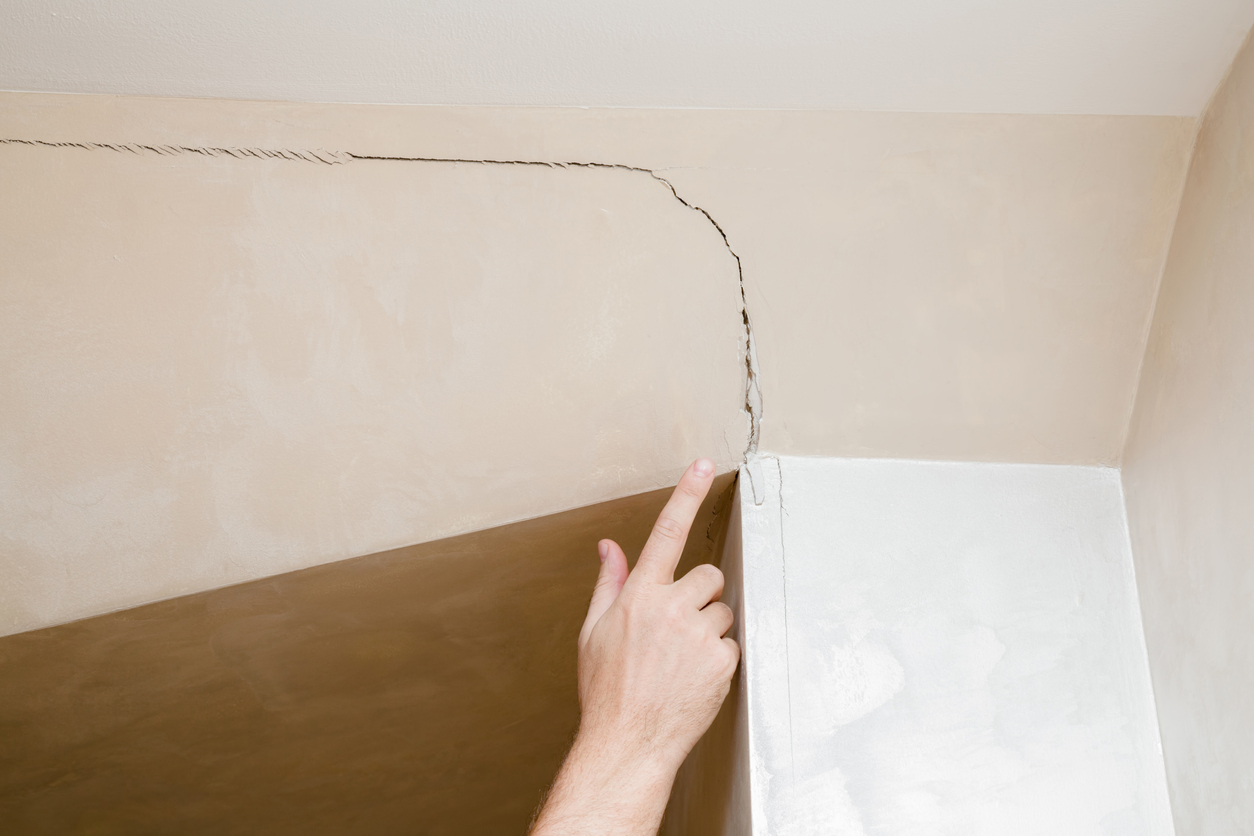

We may earn revenue from the products available on this page and participate in affiliate programs. Learn More ›
Q: I recently noticed a crack in my basement wall, and I’m concerned it’s a foundation issue. Is there a difference between what a vertical crack or a horizontal crack indicates? Should I have my foundation inspected?
A: The good news is that if the crack in your basement wall is vertical, diagonal, or meandering, it’s likely more a cosmetic issue than a structural one. However, horizontal cracks in the foundation wall of your basement may be cause for concern. The bad news is that repairing a foundation crack can be expensive, depending on how extensive the issue is. That’s why it’s important to consult a structural engineer with training and experience to help determine if the cracks in your walls are evidence of a foundation problem or just the result of common issues such as shrinkage, freezing, or cold joints.
Horizontal cracks and stair-step cracks are serious and should be addressed immediately.
When are basement cracks a problem? The answer is when they’re horizontal or in the shape of stair steps. Horizontal cracks are typically the result of issues that are creating lateral pressure on your basement wall. Several issues can lead to horizontal cracks, including:
- Backfilling soil too soon after the concrete foundation was poured.
- Water loading (also known as hydrostatic pressure). A powdery substance on the walls known as efflorescence is a sign that there’s a moisture issue.
- Ground freeze-thaw cycles known as frost heaving.
- Pressure from vehicles parked too close to the foundation.
Stair-step cracks are another common sign of foundation issues and usually occur in block foundations. In order to keep your home safe and supported, it’s important to get horizontal and stair-step cracks inspected and addressed as soon as possible. While there are many areas in the house a DIYer can tackle, these types of foundation cracks do not make that list.
Vertical and diagonal cracks typically don’t pose a structural problem.
Although they may look concerning, vertical and diagonal cracks are often just cosmetic. Since these type of cracks don’t indicate a structural issue, they don’t generally need to be addressed. Vertical and diagonal cracks are usually shrinkage cracks or the result of cold joints. Concrete shrinks as it dries, and if the mixture had a little too much water added to it, the shrinkage can result in visible cracks. A cold joint is actually not a basement wall crack but the spot where one batch of concrete was poured against another. Since the time between the two pours can range from hours to days, a visible line can be seen where the batches were poured. It’s likely your home’s contractor planned specific spots for these joints to occur, so they may even look more intentional than a natural crack.
Cold joints do tend to leak if the proper waterproofing isn’t installed, so be sure to look out for moisture near these areas. If you notice any signs of moisture, it could be time to consider the cost of basement waterproofing. If you see a vertical crack in your basement foundation wall near the corners, it could be caused by very cold water dumped by gutter downspouts. If this is the case, it may help to improve the drainage near the downspout.

Hairline and shrinkage cracks are common in new construction.
In general, shrinkage and hairline cracks are more cosmetic than structural. These types of cracks don’t run in one straight line. Instead, they tend to meander or stop in different spots and are more on the surface of poured-in-place concrete walls. If you live in a home that was recently built, it’s likely more prone to a hairline or shrinkage crack as the concrete adjusts and the extra water in the mixture evaporates. This is especially true if the concrete was poured during warmer temperatures. Basement wall cracks in new-construction homes are most likely to occur within the first month to a year after the concrete is poured.

Prompt foundation inspection and repairs can keep foundation cracks from developing into significant issues.
A basement crack may not seem like a major issue at first, but the longer it goes uninspected, especially if it’s horizontal, the more damage it could be causing. If you have extensive cracks in your basement wall, it’s a good idea to get them inspected by a structural or foundation engineer who can provide estimates for repairs or share next steps. A foundation inspection allows for experts to look at both the inside and outside of your home and assess its structural integrity. Since foundation repair costs range from $2,000 to $7,000, it’s important to get a professional opinion on whether the cracks in your basement walls are cosmetic or structural.
